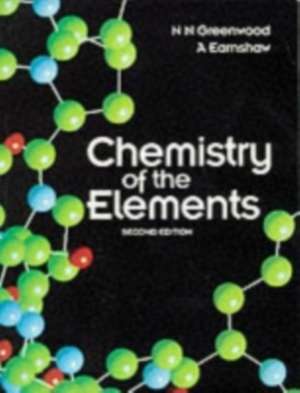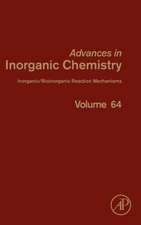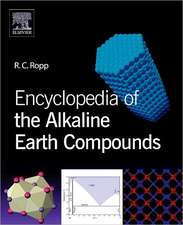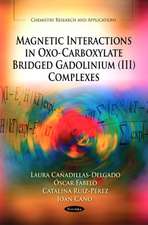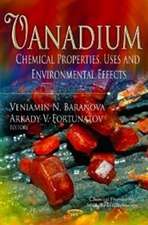Chemistry of the Elements
Autor N. N. Greenwood, A. Earnshawen Limba Engleză Paperback – 11 noi 1997
Accordingly, the book covers not only the 'inorganic' chemistry of the elements, but also analytical, theoretical, industrial, organometallic, bio-inorganic and other cognate areas of chemistry. The authors have broken with recent tradition in the teaching of their subject and adopted a new and highly successful approach based on descriptive chemistry. The chemistry of the elements is still discussed within the context of an underlying theoretical framework, giving cohesion and structure to the text, but at all times the chemical facts are emphasized. Students are invited to enter the exciting world of chemical phenomena with a sound knowledge and understanding of the subject, to approach experimentation with an open mind, and to assess observations reliably. This is a book that students will not only value during their formal education, but will keep and refer to throughout their careers as chemists.
- Completely revised and updated
- Unique approach to the subject
- More comprehensive than competing titles
Preț: 389.30 lei
Preț vechi: 496.47 lei
-22% Nou
Puncte Express: 584
Preț estimativ în valută:
74.52€ • 80.97$ • 62.63£
74.52€ • 80.97$ • 62.63£
Carte disponibilă
Livrare economică 25 martie-08 aprilie
Livrare express 15-21 martie pentru 120.30 lei
Preluare comenzi: 021 569.72.76
Specificații
ISBN-13: 9780750633659
ISBN-10: 0750633654
Pagini: 1364
Dimensiuni: 189 x 246 x 60 mm
Greutate: 2.28 kg
Ediția:Revised
Editura: Elsevier
ISBN-10: 0750633654
Pagini: 1364
Dimensiuni: 189 x 246 x 60 mm
Greutate: 2.28 kg
Ediția:Revised
Editura: Elsevier
Public țintă
Undergraduate and postgraduate students of chemistry, biochemistry and chemical engineering and technology.Cuprins
Origin of the elements, isotopes and atomic weights
Chemical periodicity and the periodic table
Hydrogen
Lithium, sodium, potassium, rubidium, caesium and francium
Beryllium, magnesium, calcium, strontium, barium and radium
Boron
Aluminium, gallium, indium and thallium
Carbon
Silicon; Germanium, tin and lead
Nitrogen
Phosphorus
Arsenic, antimony and bismuth
Oxygen; Sulfur
Selenium, tellurium and polonium
The halogens: fluorine, chlorine, bromine, iodine and astatine
The noble gases: helium, neon, argon, krypton, xenon, and radon
Coordination and organometallic compounds
Scandium, yttrium, lanthanum and actinium
Titanium, zirconium and hafnium
Vanadium, niobium and tantalum
Chromium, molybdenum and tungsten
Manganese, technetium and rhenium
Iron, ruthenium and osmium
Cobalt, rhodium and iridium
Nickel, palladium, and platinum
Copper, silver and gold
Zinc, cadmium and mercury
The lanthanide elements
The actinideand transactinide elements (Z=90-112)
Chemical periodicity and the periodic table
Hydrogen
Lithium, sodium, potassium, rubidium, caesium and francium
Beryllium, magnesium, calcium, strontium, barium and radium
Boron
Aluminium, gallium, indium and thallium
Carbon
Silicon; Germanium, tin and lead
Nitrogen
Phosphorus
Arsenic, antimony and bismuth
Oxygen; Sulfur
Selenium, tellurium and polonium
The halogens: fluorine, chlorine, bromine, iodine and astatine
The noble gases: helium, neon, argon, krypton, xenon, and radon
Coordination and organometallic compounds
Scandium, yttrium, lanthanum and actinium
Titanium, zirconium and hafnium
Vanadium, niobium and tantalum
Chromium, molybdenum and tungsten
Manganese, technetium and rhenium
Iron, ruthenium and osmium
Cobalt, rhodium and iridium
Nickel, palladium, and platinum
Copper, silver and gold
Zinc, cadmium and mercury
The lanthanide elements
The actinideand transactinide elements (Z=90-112)
